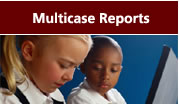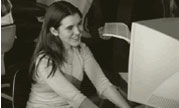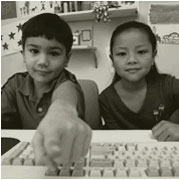|
|
|
|
|
|
||||||||||||||||||||
|
|
 |
|
|
|||||||||||||||||||||
|
|
 |
|
||||||||||||||||||||||
 |
|
|||||||||||||||||||||||
|
|
|
|
||||||||||||||||||||||

 |
School
Reports & Videos > Virtual High
Virtual High School: Classrooms Without Walls
Case Overview The Virtual High School (VHS) was a non-profit consortium of high schools formed to develop a low cost way for high schools to offer courses that would otherwise not be available to their students. The innovation in VHS was the use of the Internet to deliver instruction across long distances and various time zones. The consortium developed Internet-based courses, or “NetCourses” as VHS called them, that were taught by consortium teachers for students in the consortium’s schools. During the 2000-01 school year over 3000 students from nearly 200 schools from 34 states and 8 foreign countries took part in just over 150 NetCourses. In addition to the academic courses, the Virtual High School web space featured a student showcase, student and faculty lounges, and a yearbook and school newspaper. VHS teachers posted course materials on an Internet server, which students could access at any time; the online space also provided a conferencing system that allowed students and teachers to exchange asynchronous communications from any networked computer. Each participating school provided its VHS students with access to a school computer connected to the Internet. Using any Web browser software, students used a password to log into the VHS course in which they were enrolled. Through the browser the students were able to view, print, and respond to materials already “posted” on the course’s Web site by the teacher or other students, or follow links to any other pertinent Internet sites. Each school in the consortium could enroll up to 20 students in VHS’s NetCourse offerings for each section of a teacher’s time (i.e., one NetCourse) that it contributed to the pool. Contributing teachers taught an VHS course in place of a regular course section at their home school. To prepare them to design a NetCourse, VHS teachers were required to successfully complete the Teachers Learning Conference (TLC), a 12 credit graduate-level NetCourse on the design and development of network-based classes; they also were able to consult with VHS staff members who had expertise in educational strategies and technologies appropriate for online instruction. Funding for the Virtual High School came primarily from a 5-year Technology Innovation Challenge Grant awarded to Handley Public Schools in October 1996 by the U.S. Department of Education. A nonprofit educational research and development organization was also a full partner in the design and implementation of the VHS project. During the life of this grant original founding consortium schools were expected to contribute matching funds and there was some corporate sponsorship as well.
|
|
||||||||||||||||||||||
HOME | PROJECT OVERVIEW | SCHOOL REPORTS & VIDEOS | MULTICASE REPORTS | CONTACT |
||||||||||||||||||||||||
© 2003 Sara Dexter and Ron Anderson. All rights reserved. Please contact us if you would like more information about the project. |
||||||||||||||||||||||||